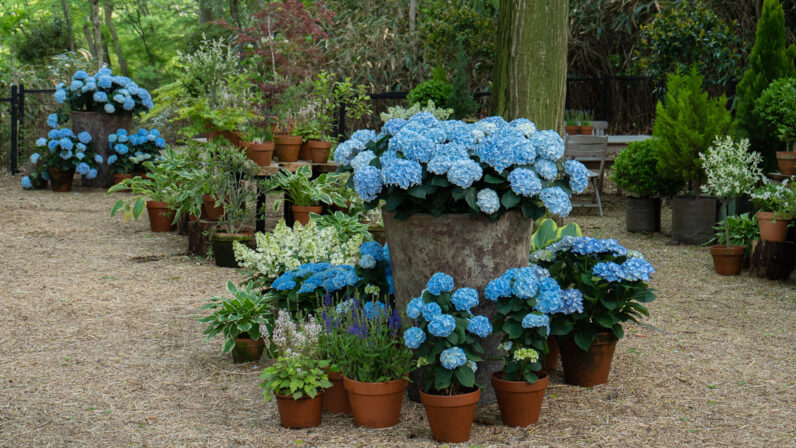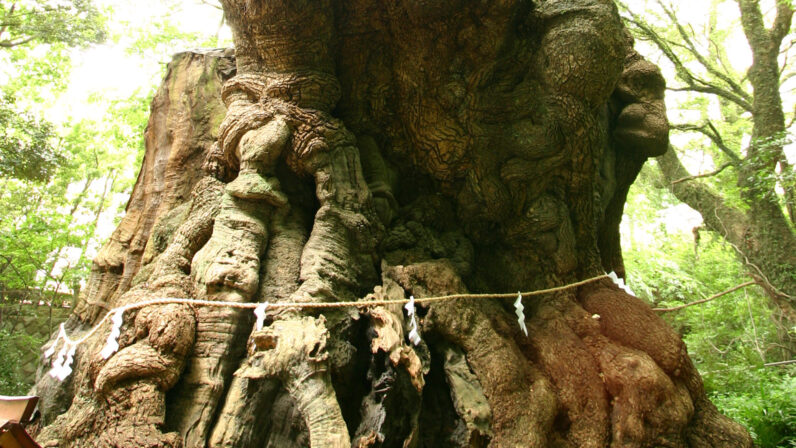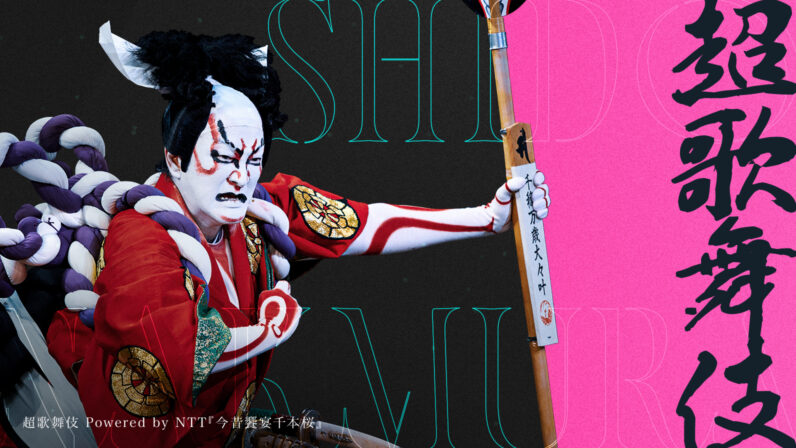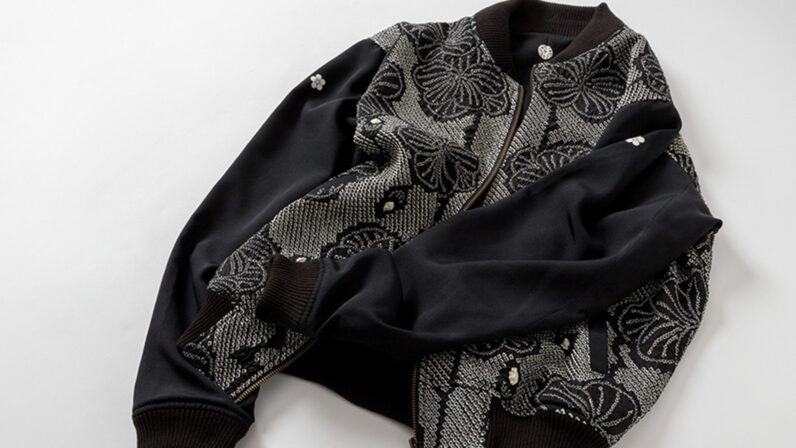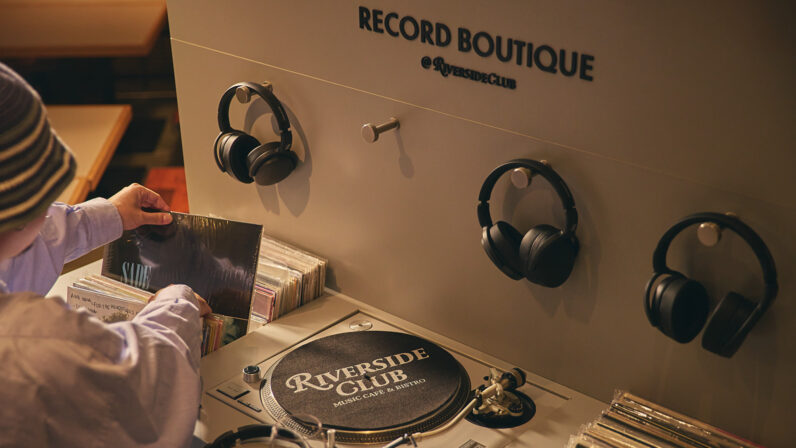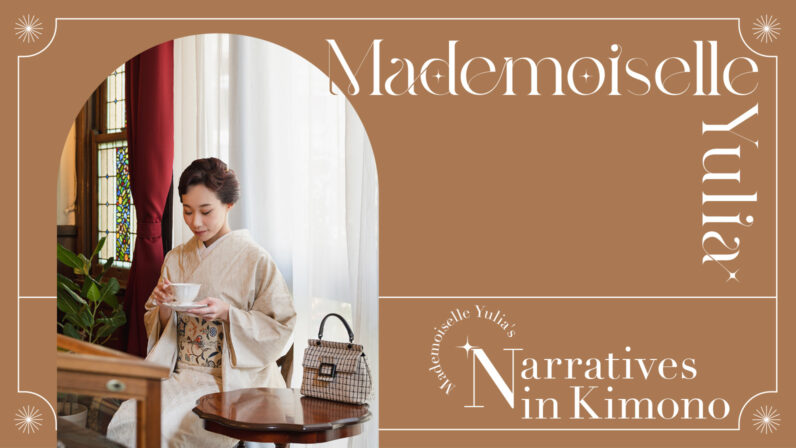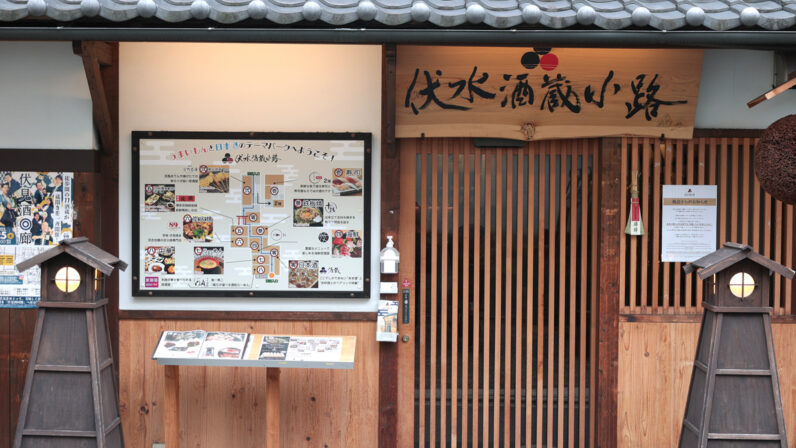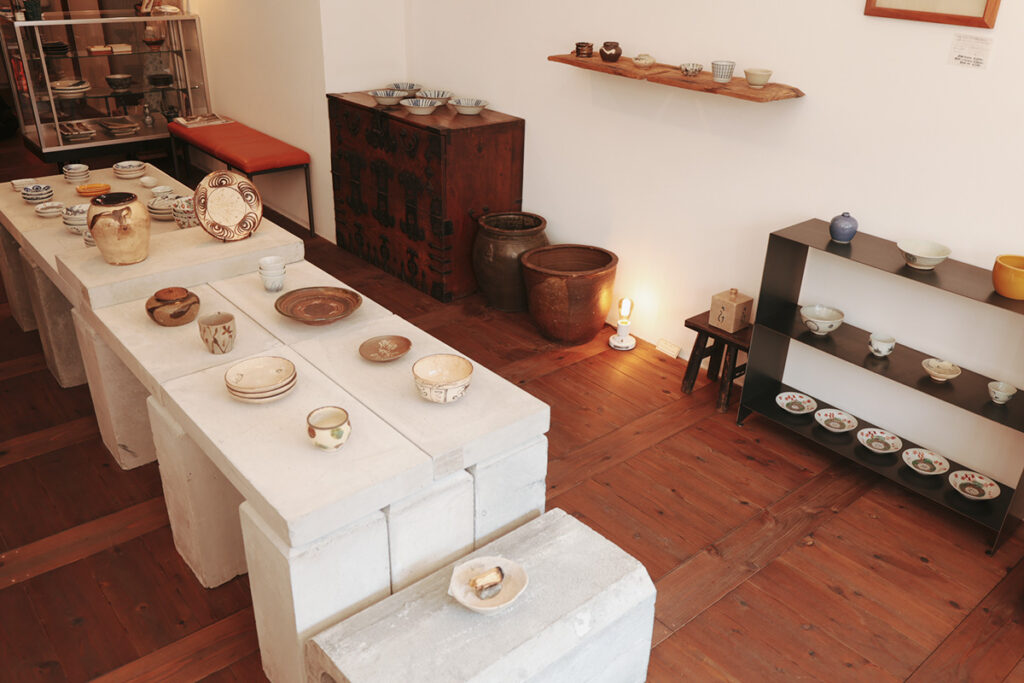
East of the expansive Kyoto Imperial Palace, you’ll find Teramachi Street running from north to south. Known as ‘Teramachi Art Street,’ this area is home to many shops selling antiques and vintage items. In recent years, the value of these old treasures has been rediscovered, making the area a hidden gem of sorts, often frequented by international travelers. After hearing that there was a shop in the area specializing in antique pottery, I decided to check it out. The shop is called YAMADA MPD ART CLUB.
Folk Art Pieces by Renowned and Unknown Artists
The owner, Naoto Yamada, inherited his passion for antiques from his grandfather, who ran an antique and art shop called Yamada Manpodo. After his grandfather passed away, there was no one to take over, and the shop remained unused for some time. Until a few years ago, when Naoto and his wife decided to breathe new life into it.
The shop’s glass exterior gives it a modern feel, quite different from the typical image of an antique store. Inside, though not very large, the space feels open and inviting, with shelves displaying pottery at a low level against white-painted walls.
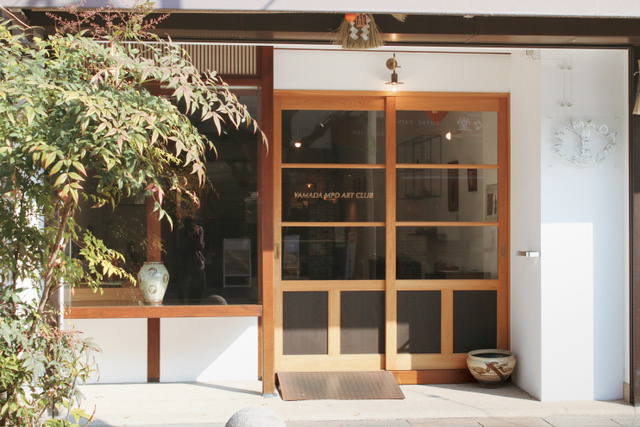
The entrance of YAMADA MPD ART CLUB
The shop specializes in ‘mingei’ (folk art), which are everyday items crafted by anonymous artisans. Art critic Yanagi Sōetsu and ceramic artist Kawai Kanjiro labeled them as mingei, advocating that there is inherent beauty in these functional objects. The mingei movement began in 1926 and gained significant attention, even becoming a trend in the post-war years. Among the mingei pieces, Naoto Yamada’s collection focuses on nameless pottery from the Edo to Taisho periods, as well as works by the leading figures of the mingei movement.

The folk art pottery displayed inside the shop.
The Remarkably Refined Culture of Mingei
What drew Naoto to mingei?
“One of the key figures in spreading the mingei movement was Kanjiro Kawai, who lived here in Kyoto. One day, I went to see an exhibition of his work at the Kyoto National Museum of Modern Art, and it left a huge impression on me. I already knew the word mingei, but I didn’t really understand it deeply. What I saw at the exhibition felt different from what I thought mingei was, or how it’s generally perceived. That sparked a curiosity in me. What exactly is mingei? I wondered, and I found myself diving deeper and deeper into it. I opened this shop in October 2021, bringing new life to the building that once housed my grandfather’s antique store.”
Mingei covers a wide range of styles and objects, so how does Naoto choose what to include in his collection?
“When people hear the word mingei or antiques, they often think of something rustic or old-fashioned. But I see them as part of a remarkably refined culture. I focus on selecting pieces that I feel are interesting and harmonize well with contemporary spaces.”
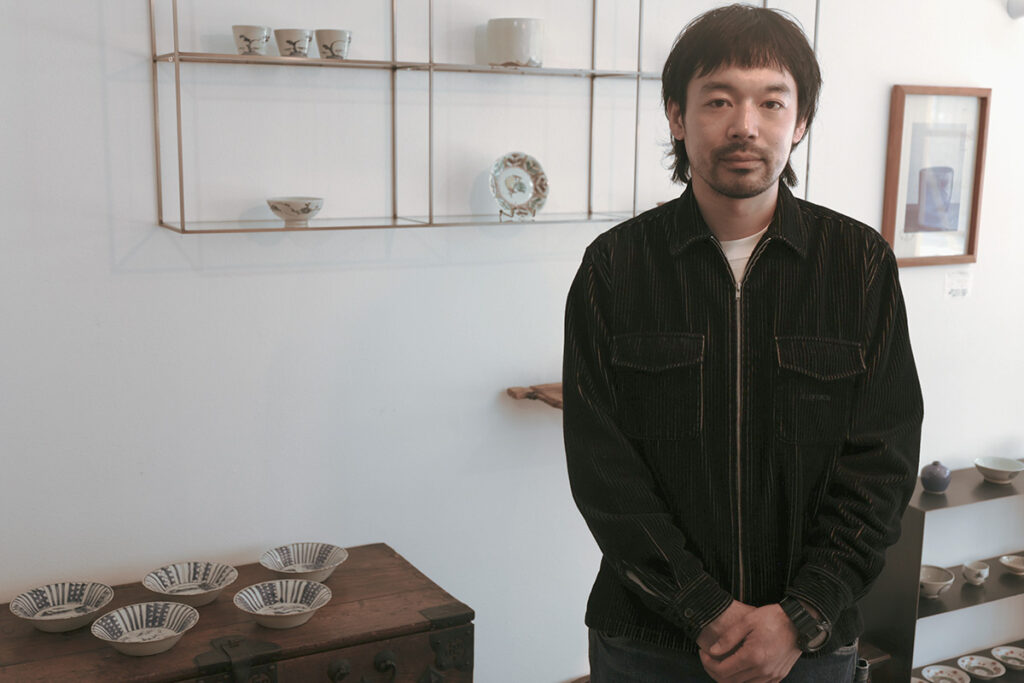
Naoto explains that old pottery is more deeply refined than people often realize.
Even Pottery Without a Name Has a Story
As we’re unable to showcase every item in the store here, I asked Naoto to select three pieces that best represent the shop’s concept. He chose a vase with no accompanying description or label.
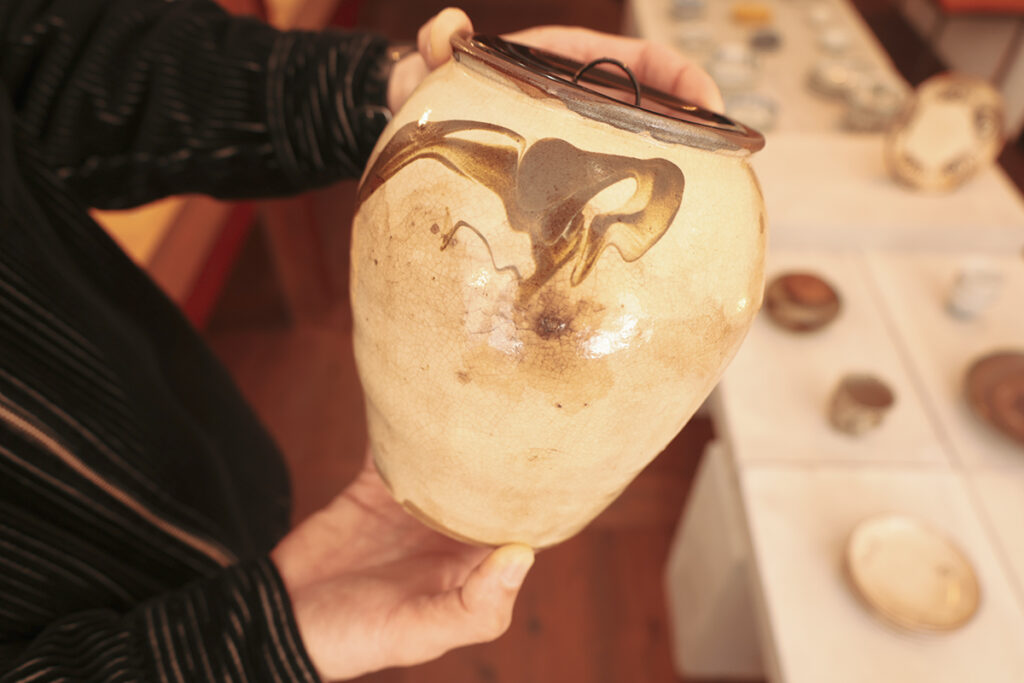
“This is a piece of Tanba ware from the late Edo period. It was made as an everyday object, possibly for holding salt, and is considered a utilitarian item. Because of its everyday use, there are surprisingly few surviving pieces. It uses a technique called ‘suminagashi,’ which creates abstract patterns. Since there was no intention to create specific designs, each piece is completely unique. The abstract decoration adds to its presence, which I find really interesting.”
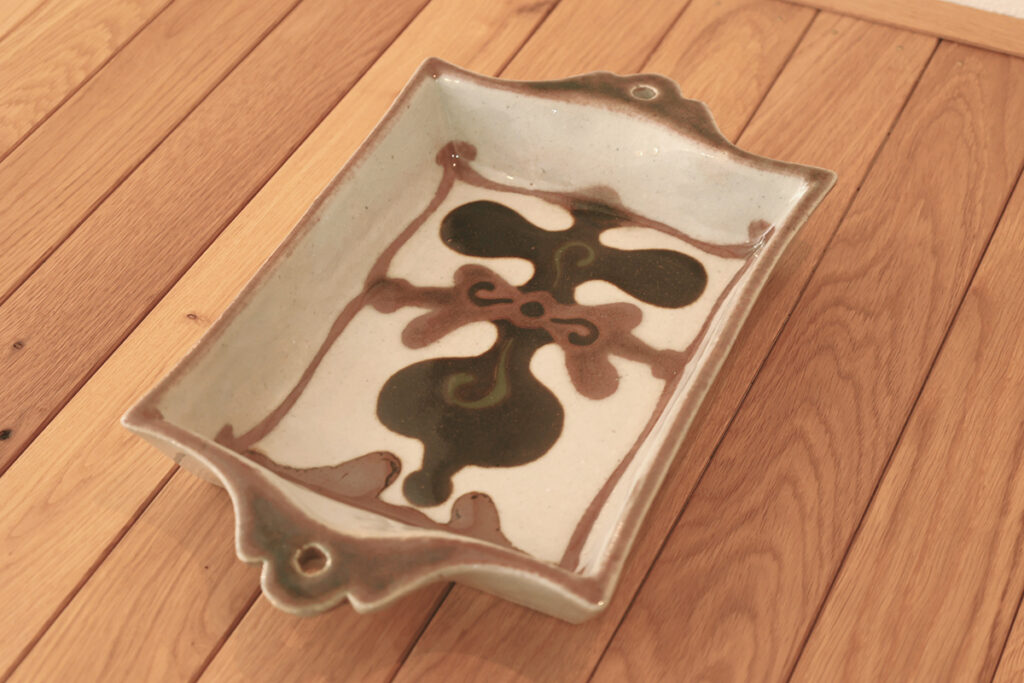
“This ceramic plate was created by Kanjiro Kawai around 1951, during his later years. It also features abstract patterns, but the motif is a flower. It is sometimes called ‘nenju’ or ‘ryoka,’ and is thought to be inspired by the moment in Buddhist teachings when the Buddha picked up a flower to show to his disciples. The deformed flowers, typical of Kawai’s style, are pop and innovative. The form likely derives from ‘hengaku,’ the plaques displayed on torii gates. Though rooted in mingei, this piece is deeply tied to Buddhist philosophy. I see it as a symbolic expression of Kanjiro Kawai, one that fully embraces the essence of mingei and turns it into something uniquely his own. That said, even without this context, the iconic patterns and design are simply striking.”
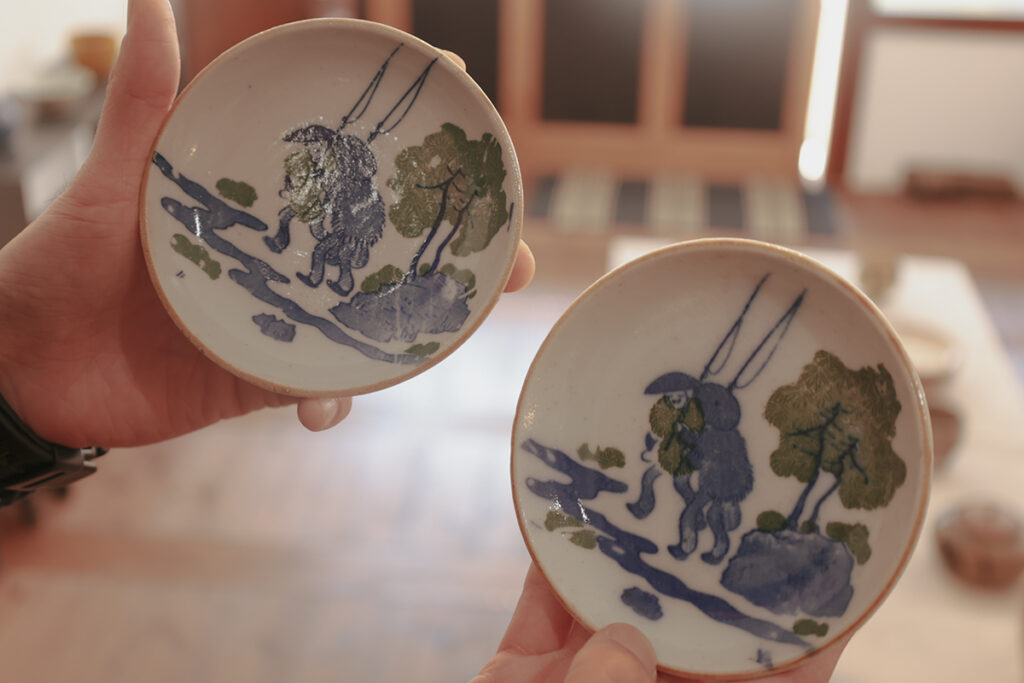
“This small plate was made between the late Meiji and Taisho periods, and there are several similar pieces. It was created using the ‘inban-de’ technique, where a stencil with a cut-out design is pressed onto the piece to transfer the pattern. Many pieces like this were mass-produced at the time. Nowadays, with printing technology, it’s easy to produce identical items, but back then, even with the same stencil, each piece would slightly vary, with patterns shifting here and there. So, even though they may look the same at first glance, each has its own subtle differences, giving it a unique charm. The variety of patterns is fascinating, and with a relatively affordable price range, it’s a great option for anyone looking to start collecting antiques.”
Naoto believes that every piece of contemporary pottery has its roots in something deeper. He explained that when you place old pottery on your dining table and reflect on its origins, or mix modern and antique pieces while eating, you begin to feel connected to history, and it brings a comforting sense of warmth.
We tend to think that something is valuable simply because it is rare and old, but when we pause and truly consider the question “What is value?”, we often find ourselves stuck. This shop, however, offers a refreshing perspective, gently shifting our thinking with its atmosphere, unique offerings, and Naoto’s insight. If you have any interest in antiques or mingei, it’s definitely worth visiting.
YAMADA MPD ART CLUB
Address: 22 Fujiki-cho, Takeyacho, Teramachi-dori, Nakagyo-ku, Kyoto 604-0992
Hours: 11:30 AM - 6:00 PM
Closed: Tuesdays and Wednesdays, with occasional closures
Website: https://yamadampdartclub.com/
Instagram: @yamadampdartclub

